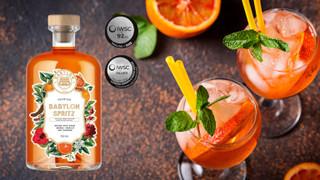A Complete Guide to Non Alcoholic Wines

Over the past decade, the way people approach beverages has undergone a significant shift. A new culture is emerging—one where health, mindfulness, and social enjoyment coexist without the need for alcohol. At the forefront of this movement is a fascinating alternative: non alcoholic wines. These beverages are carefully crafted to offer the same sophistication, flavors, and aromas as traditional wines, yet they allow individuals to enjoy the ritual of wine drinking without the effects of alcohol. From casual dinner parties to corporate gatherings, their popularity has skyrocketed, reshaping how people celebrate, socialize, and unwind.
What Makes These Wines Different?
At first glance, a bottle of non alcoholic wine looks identical to a traditional one. The glass, the cork, the labels—all seem familiar. The real difference lies inside. These wines begin their journey in the same way as conventional wines, using grapes that are harvested, fermented, and aged. The key step comes afterward: the removal of alcohol. Advanced techniques such as vacuum distillation or reverse osmosis are used to gently separate the alcohol from the wine without stripping away the flavor compounds and aromas that give wine its complexity. The result is a beverage that captures the spirit of wine without the intoxication, appealing to anyone who wants the taste and experience without compromise.
A Brief History of Non Alcoholic Alternatives
Though they may feel like a modern invention, alcohol-free beverages have been around for centuries. In various cultures, people created fruit-based drinks or lightly fermented grape juices that contained little to no alcohol. The more refined versions we know today, however, began gaining traction in the late 20th century. With improvements in winemaking and technology, producers discovered methods to remove alcohol without sacrificing flavor. As consumer awareness of health and wellness increased, these beverages gained traction not just as substitutes, but as respected drinks in their own right.
Why People Are Choosing Them
One of the main reasons people are turning to non alcoholic wines is health consciousness. Many individuals are paying closer attention to their diet, their liver health, and their overall lifestyle. By enjoying alcohol-free alternatives, they reduce the risks associated with drinking while still participating in social rituals. Beyond health, inclusivity is another major factor. Not everyone can or wants to consume alcohol—whether due to pregnancy, religious beliefs, personal preference, or recovery journeys. These wines create a welcoming environment for everyone at the table. They also appeal to those who want to wake up refreshed after a night out, making them perfect for weekday dinners, business events, or simply relaxing at home.
The Art of Flavor Without Alcohol
Skeptics often wonder if removing alcohol dilutes the richness of wine. In reality, winemakers take great care to preserve the character of their creations. Alcohol contributes to body and warmth in traditional wines, so when it is removed, other elements must be emphasized. Non alcoholic wines showcase the natural fruitiness of grapes, their acidity, and often a surprising depth of flavor. Red varieties may highlight dark berries, cherries, and earthy tones, while whites can offer citrusy, crisp, and floral notes. Sparkling versions provide the effervescence people love in celebratory moments. Through careful crafting, winemakers ensure the absence of alcohol does not mean the absence of enjoyment.
Pairing With Food
Just like traditional wines, these alternatives shine brightest when paired with food. A light, crisp white can complement seafood dishes, salads, or grilled vegetables, enhancing freshness without overwhelming the palate. A robust red works beautifully with pasta, roasted meats, or hearty stews, bringing balance to savory dishes. Sparkling non alcoholic wines are an excellent match for appetizers, cheese boards, or even desserts, adding a festive touch. The absence of alcohol makes these pairings accessible to a broader audience, allowing hosts to serve elegant meals without excluding anyone at the table.
Social Acceptance and Lifestyle Trends
The modern social landscape has shifted significantly. Younger generations, particularly millennials and Gen Z, are drinking less alcohol than previous generations. For many, wellness, fitness, and mental clarity take priority. The popularity of sober-curious movements and “dry months” has encouraged experimentation with alcohol-free living. Non alcoholic wines fit seamlessly into this lifestyle, offering a stylish and grown-up alternative that is more appealing than soda or juice at a dinner party. This cultural shift is reshaping not only consumer habits but also the beverage industry as a whole, driving restaurants, bars, and retailers to expand their offerings.
The Role of Technology in Perfection
The quality of non alcoholic wines today owes much to technological advancement. Early versions were sometimes criticized for being overly sweet or lacking depth. Today, however, winemakers use advanced de-alcoholization methods that protect the delicate balance of flavors. Reverse osmosis, for example, carefully filters out alcohol molecules while preserving aroma compounds. Vacuum distillation removes alcohol at lower temperatures, reducing the risk of damaging flavor. These techniques ensure the final product is both refined and enjoyable, making them nearly indistinguishable from their alcoholic counterparts in taste and presentation.
The Market and Its Growth
The global demand for alcohol-free beverages has surged, and non alcoholic wines are a significant part of that growth. Major supermarkets, specialty wine shops, and even luxury retailers now dedicate shelf space to these products. Restaurants and hotels are also recognizing the importance of offering inclusive options to their guests. With this rising popularity, producers are expanding their range, creating everything from organic options to low-sugar varieties. The market has transformed from a niche interest into a mainstream choice, signaling that these beverages are here to stay.
Misconceptions and Myths
Despite their popularity, misconceptions still linger. Some believe non alcoholic wines are simply grape juice, but that is far from the truth. Unlike juice, these wines undergo fermentation, which creates complexity and depth before the alcohol is removed. Others assume they lack sophistication, yet many sommeliers and wine critics praise their evolving quality. There are also myths around safety, with some people mistakenly thinking they contain no trace of alcohol. In reality, most contain less than 0.5% alcohol by volume—similar to the level found in some fruit juices or bread. This small amount is negligible for most people but important for consumers to understand.
Cultural and Social Impact
The rise of non alcoholic wines has done more than provide an alternative; it has changed the cultural landscape. In many social settings, there was once an expectation to drink alcohol. Choosing not to often required an explanation. Today, these beverages make it easier for individuals to decline alcohol without standing out, fostering inclusivity and respect. They also allow more people to join in the ritual of toasting, dining, and celebrating together, strengthening the sense of community without creating barriers.
Future of Non Alcoholic Wines
Looking ahead, the future of these wines seems bright. As technology continues to improve, the flavor profiles will become even more refined, appealing to both wine enthusiasts and casual drinkers. Sustainability is also a growing focus, with many producers emphasizing eco-friendly practices in grape cultivation and production. Additionally, the industry is likely to see greater creativity, with new blends, sparkling innovations, and region-specific varieties emerging. As consumer demand grows, the diversity of options will expand, making alcohol-free wine a natural part of dining and celebration worldwide.
Conclusion
The rise of non alcoholic wines marks a pivotal change in how society approaches drinking. These beverages embody balance—offering the sophistication, ritual, and pleasure of wine without the drawbacks of alcohol. They speak to a generation that values wellness, inclusivity, and choice. Whether enjoyed with a gourmet meal, shared at a family gathering, or sipped quietly at the end of the day, they prove that enjoyment and responsibility can coexist beautifully. As they continue to evolve, one thing is certain: the future of wine is no longer defined solely by alcohol, but by the experience it brings to everyone who enjoys it.
- Vibnix Blog
- Politics
- News
- Liberia News
- Entertainment
- Technology
- EĞİTİM BİLGİLERİ
- Art
- Causes
- Crafts
- Dance
- Drinks
- Film
- Fitness
- Food
- Oyunlar
- Gardening
- Health
- Home
- Literature
- Music
- Networking
- Other
- Party
- Religion
- Shopping
- Sports
- Theater
- Wellness



